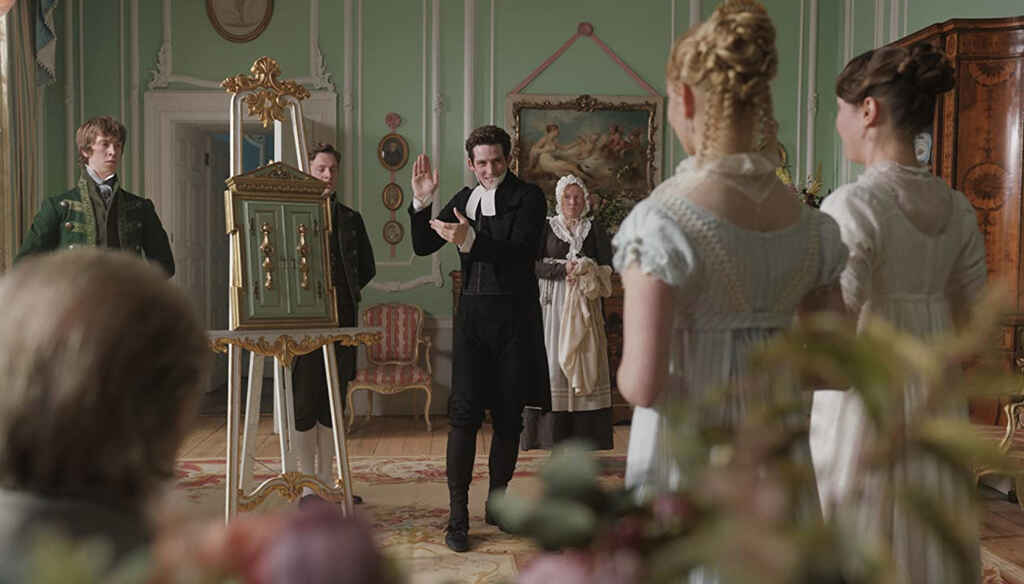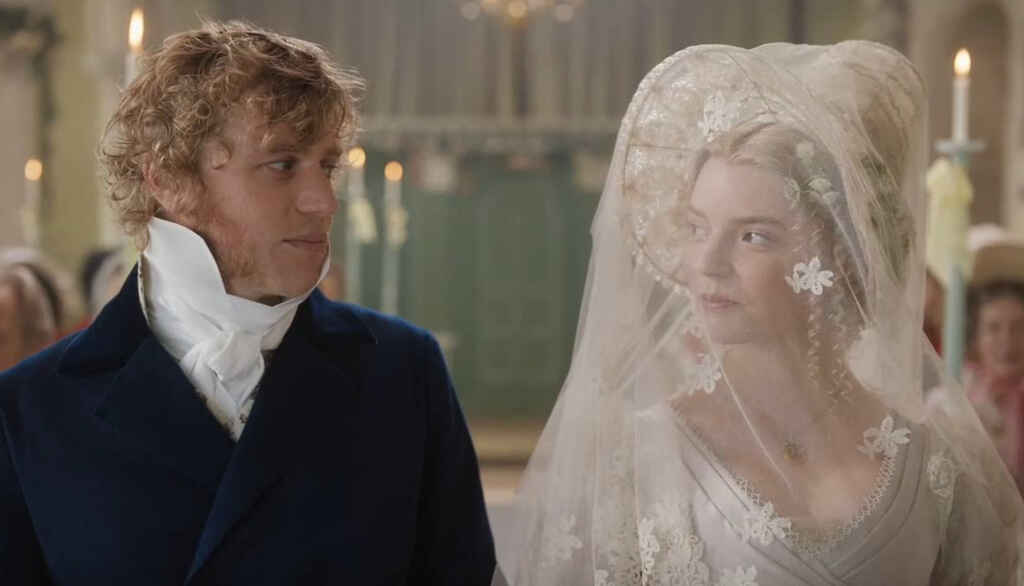Posted on Oct 07, 2021
How to Write a Story in 6 Spellbinding Steps
Tom Bromley
Author, editor, tutor, and bestselling ghostwriter. Tom Bromley is the head of learning at Reedsy, where he has created their acclaimed course, 'How to Write a Novel.'
View profile →Savannah Cordova
Savannah is a senior editor with Reedsy and a published writer whose work has appeared on Slate, Kirkus, and BookTrib. Her short fiction has appeared in the Owl Canyon Press anthology, "No Bars and a Dead Battery".
View profile →Most of us know a great story when we hear one — or read one, or watch one unfold onscreen. But just because we recognize what makes an amazing story, doesn’t mean we all know how to write a story from scratch.
Luckily, this post will show you how to turn a few key ingredients into a scrumptious story! Whether you’re looking to pen a book, compose a screenplay, or spin a short tale around a campfire, here’s how to write a story in six steps.
🖊️
Which famous author do you write like?
Find out which literary luminary is your stylistic soulmate. Takes one minute!
1. Start with a character or concept
A strong character or an interesting concept: all great stories start with one or the other. Most writers tend to begin with a concept, then build out the story and characters from there. But some writers prefer to start with a distinctive character and shape the story around them.
Both methods are effective, though the first will often result in a more “plot-driven” story (e.g. The Da Vinci Code, The Hunger Games) while the second will yield a more “character-driven” story (The Catcher in the Rye, The Vanishing Half). If you have a strong preference for one over the other, be careful in these early stages! How you conceptualize and outline your story will inevitably affect how you end up telling it.
To demonstrate this — and to identify the most important elements of any story — we’ll look at two examples throughout this post. One story derives from a character, the other from a concept; one is a novel of manners, the other a sci-fi novella. But while they seem very different on the surface, they have the same essential DNA — that of an expertly told story. Unsurprisingly, they both begin strong.
Character and concept examples

- Emma by Jane Austen is famously character-based. Austen even described her plans for the novel as thus: “I am going to take a heroine whom no one but myself will much like.” Indeed, the opening lines of Emma — “handsome, clever, and rich” — paint a spoiled girl without a care in the world. But the beauty of the novel is in Emma’s character story, the lessons she learns, and where she ends up.
- The Story of Your Life by Ted Chiang is decidedly concept-based. The concept here being: What if there were more than one way to experience time? This possibility raises fascinating questions about determinism and free will — which Chiang explores in the events of this novella, narrated by linguist and professor Louise Banks.
💡 Inspiration checkpoint! Our writing prompts to get the creative juices flowing and plot creation tools are perfect if you have a character in mind, but aren’t sure what to do with them. Or if you’ve hit on a killer concept but feel stumped by character development, try these character development and questionnaire templates to flesh out your protagonist.
2. Create intrigue with your inciting incident
Once you’ve got your main character, concept, or a bit of both, it’s time to invent an inciting incident. This is the event that sets your story in motion: an accidental discovery, a bold new choice, a call to action from another character, or any other catalyst you can conjure.
The nature of your inciting incident will likely relate to your genre. For example, the call to adventure is common in action-packed fantasy, whereas a subtler inciting incident — like a run-in with an old friend — might suit a literary fiction tale. Try brainstorming a few different inciting incidents and considering which would “fit” your story best, both tonally and plot-wise.
Finally, it might sound obvious, but make sure to introduce the inciting incident early! If you’re writing a book, it should be within the first 10% of the story; if you’re trying out a shorter form, it should be even sooner. This will get people invested quickly and ensure you don’t dilly-dally with backstory, losing their interest before the real story begins.
Inciting incident examples

- Emma: After a beloved friend gets married, Emma Woodhouse — who introduced the couple — takes up matchmaking as a hobby.
- Story of Your Life: Dr. Louise Banks is recruited for a government project involving recently landed aliens, in an attempt to decipher their language.
3. Ramp up your story with rising action
Now for the element that will form the bulk of your story: the rising action that takes your plot to the next level. This is everything that leads up to the high point of your story — indeed, without rising action, there is no story!
Needless to say, most of your creative energy should go into this part. You’ll have to construct multiple events, moments of characterization, and likely a subplot or two to complement the main plot. (The only exception being if you’re writing a short story, which means jettisoning much of the buildup you’d find in a novel/screenplay/etc. in order to keep things punchy.)
Here are a few things to keep in mind as you enact your rising action.
🥊 Focus on conflict
Internal and external conflict are what make a story worth telling — no one wants to hear about characters living easy, boring lives. When you first formulated your character or concept, you probably established at least one key conflict, either within themselves or with some external force.
The trick to strong rising action is to incorporate the other type of conflict as well. For example, if you’re writing a war story, the external conflict is baked in: your protagonist’s side vs. the enemy. But mix in a little internal conflict — maybe your protagonist secretly sympathizes with the other side — and the story becomes much richer.
👫 Don’t neglect characterization
Presenting internal conflict is a great way to characterize your protagonist, but remember to characterize them in other ways too — and don’t forget about secondary characters! Think of each new plot point as an opportunity for characterization: every person’s reaction, no matter how small, will contribute to the audience’s understanding of them.
Dialogue can also be very useful. How your characters interact can tell people a great deal about their values, strengths, and weaknesses. For example, a character who’s nice to everyone except one person might indicate that they shouldn’t be trusted. Even brief flashes of dialogue can add much-needed color to characters’ personalities!

FREE COURSE
How to Write Believable Dialogue
Master the art of dialogue in 10 five-minute lessons.
🥨 Build carefully to twists
As your rising action ascends, you may be tempted to throw in a twist or two. While there’s absolutely nothing wrong with twists — in fact, if you’re in the middle of a mystery or thriller, they’re expected! — you must include sufficient buildup and context clues, so readers don’t feel cheated by a twist that comes out of nowhere.
That said, subtlety is the name of the game. Sprinkle in enough hints that readers can pick up on something unusual, but not so much that they’ll guess the twist too early. If your audience can look back on your story and think “Oh, that’s what that was about!”, you’ve done well.
Rising action examples

-
Emma: Emma dissuades her friend Harriet from marrying a farmer and attempts to match Harriet with the local vicar, Mr Elton, instead. However, problems arise when Elton says he’s actually interested in Emma. After rejecting him, Emma finds herself drawn to newcomer Frank Churchill, though her good friend Mr Knightley warns her about him.
Soon, the beautiful, talented Jane Fairfax arrives in town and Emma envies her — prompting internal conflict over her own generosity of spirit, as Jane is an orphan who Emma should pity. Emma questions herself even more after she accidentally insults a family friend, for which Mr Knightley scolds her. She is humbled once and for all when Frank and Jane turn out to be engaged… and Harriet, whom Emma believed to be in love with Frank, reveals that she is interested in Mr Knightley.
-
Story of Your Life: Louise works with a physicist, Dr. Gary Donnelly, to untangle the aliens’ language and their way of understanding the world. They struggle at first, since the aliens (dubbed “heptapods” for their seven limbs) are so different from humans. But over time, they make progress: Louise learns their written and oral languages, and Gary makes a breakthrough when he realizes the heptapods understand light travel.
Meanwhile, Louise recounts anecdotes of her daughter (narrated to the daughter, in second person perspective), connecting them to her research in subtle ways. The conversations between herself and her daughter not only display Louise’s character, but foreshadow the findings still to come.

GET ACCOUNTABILITY
Meet writing coaches on Reedsy
Industry insiders can help you hone your craft, finish your draft, and get published.
4. Culminate in a climax
The climax of a story is where all that rising action peaks: the conflict comes to a head, the big twist is revealed, and your main character(s) must make a critical decision. Will they rise to the challenge? (Spoiler alert: yes!)
Above all, the climax should feel like the high point of your story; there’s nothing worse than a climax that’s, well, anticlimactic. Much of this will depend on how you’ve built up to it. If you’ve posed interesting questions, any climax that answers them will be gratifying, even if the moment of revelation itself isn’t that dramatic.
That said, it never hurts to add a little drama! An exciting confrontation between characters, a shocking reveal in front of the whole cast, or a lightbulb moment that spurs your protagonist to finally take action all make for great climactic moments. Whatever you have in mind, just be sure to execute it in a way the audience remembers.
Want to learn more about how climaxes work in different types of stories? Check out our all-inclusive story structure guide.
Climax examples

- Emma: Harriet’s confession prompts dual revelations for Emma. Firstly, that she herself is in love with Mr Knightley; and secondly, that she has made many mistakes and meddled too much in other people’s lives. Feeling contrite, she runs into Knightley and admits her shortcomings. Mr Knightley then reveals that he doesn’t love Harriet, but rather harbors deep feelings for Emma — who is surprised and overjoyed.
- Story of Your Life: Louise realizes that the heptapods’ written language reflects their experience of simultaneous time (which is why they understood light travel so easily). The reader then understands that the memories of her daughter are not memories, but flash-forwards to her future — Louise has come to experience simultaneous time as well, and must decide whether to accept her fate or defy it.
5. Strike an ending that satisfies
Post-climax comes the falling action, or denouement — and while it might seem (literally) like an afterthought, it can be very detrimental to disregard it as a storyteller.
True, the falling action may not be as exciting as other parts of your story, but it’s often the part that leaves your audience satisfied. People don’t just want the climax; they want to see how things turn out for the characters, even if it’s only a scene or two. The denouement is also your chance to tie up any loose ends that weren’t addressed by the climax (subplots, etc.).
If you’re feeling bold, you might attempt an equivocal ending, or even set the stage for a series. The specifics depend on what you want readers to take away… and indeed, whether you want this to be the ending “forever” or just “for now”. But even if you intend to write more about these characters, there should be some sense of closure.
Ending examples

- Emma: Emma and Knightley resolve to marry and live at her family’s estate. The only cloud hanging over them is Harriet, whom Emma has betrayed with Mr Knightley. But Emma, having learned her lesson, decides not to meddle anymore — and fate rewards them by bringing Harriet back to Robert Martin, the farmer she loved in the first place. At last, all couples are married with the prospect of “perfect happiness.”
- Story of Your Life: Having been enlightened by the heptapods, Louse is not surprised when they suddenly leave Earth. Now all that’s left is to carry out her life as she’s seen it. Louise’s choice is confirmed when, in the final scene, she and her husband (implied to be Gary, the physicist on the project) decide to have a baby: her daughter.
6. Refine in the rewrite
You’ve written out your entire story — congrats! But you’re not out of the woods just yet. No matter how carefully you planned your story, there’s bound to be a few things you either didn’t pull off or just plain forgot.
That’s why, before you submit or publish your story in its final form, you should take it through at least a couple rounds of rewriting! This will a) ensure that obvious errors are corrected, and b) give you some general peace of mind. Even if someone else will be editing your story down the line, you’ll know you maximized your chances of success by polishing your manuscript as much as possible.
If you have the budget for it, we'd recommend looking for a professional editor. If not, this self-editing guide is a must-read for intensive edits, but here are a few tips to start you off:
😌Take a break before you edit. You’ll need “fresh eyes” to work effectively, and for that, you must spend some time away from your story — ideally a week or more.
📝Return to your outline. Though your story will have evolved beyond its outline by now, looking back at your original plans may help you remember how you meant to incorporate certain elements, and give you ideas for how to fix them in the rewrite.
🌈Show, don’t tell. In the writing itself, make sure you’re not just duly explaining what happens. Even in something like a screenplay, strive for prose that’s sensory and immersive — you want people to feel like they’re right there in the thick of it.
🤔Ask what the story needs. Finally, sometimes you just need to dig deep and ask yourself what the story needs. Does your main character lack motivation? Should your climax be more exciting? While it may feel like an uphill battle, undertaking a substantial edit is much better than putting a subpar story out into the world.
This is as far as we can take you; from this point on, it’s just you and the wide blank page. But don’t be intimidated — with these fundamentals in mind, you’ll be on your way in no time! Whether you end up writing short fiction like flash fiction or an Odyssean tome, you have everything you need to achieve storytelling success.

FREE COURSE
Show, Don't Tell
Master the golden rule of writing in 10 five-minute lessons.







